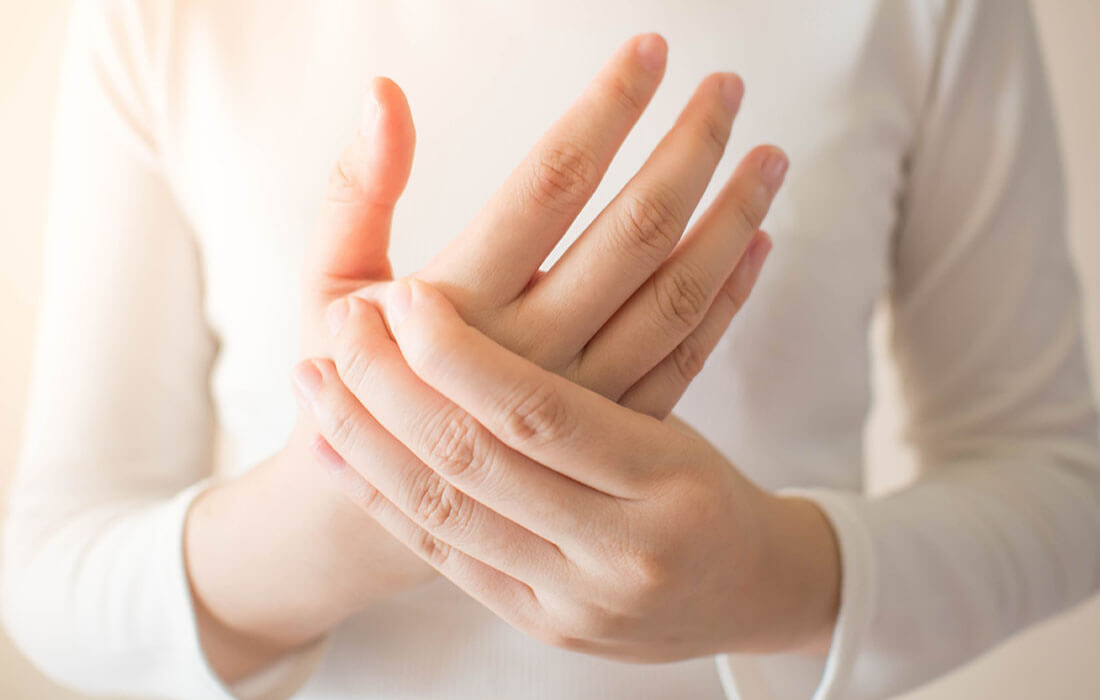What Is Tennis Elbow?
Tennis elbow is a painful condition of the tendons that connect the muscles that move the wrist on the outside of the elbow. The condition is often associated with overuse and repetitive motions.
Elbow Anatomy
The elbow is a complex hinge joint that connects the upper arm to the forearm. Three bones make up the joint:
- Humerus – upper arm bone
- Epicondyles – bony bumps on the bottom of the humerus
- Lateral epicondyle – bony bump on the outside of the elbow
- Radius – forearm bone
- Ulna – forearm bone
Muscles, ligaments and tendons all hold the joint together.
Tennis Elbow Symptoms
Tennis elbow symptoms develop gradually with the pain beginning slowly and starting out mild, then worsening over weeks to months. Usually, no specific injury is associated with the onset of tennis elbow. The dominant arm is usually affected; however, occasionally both arms can be affected.
Pain or burning on the outer part of the elbow and weak wrist extension are the main symptoms. These symptoms worsen with forearm activity and may range from mild discomfort to severe pain. You may experience stiffness and pain when lifting things and moving your wrist.
The pain can be particularly bad when gripping or making twisting movements, such as trying to hold a mug, twist a door handle or open a jar. Even shaking hands may be painful and difficult.
Tennis Elbow Causes and Risk Factors
Tennis elbow is usually caused by overuse injury. The muscles and tendons in your forearm are strained due to strenuous or repetitive activity.
Though overuse injury is the most common cause of tennis elbow, you may also develop the condition from straining your forearm muscles while doing an activity you are not used to, such as gardening or decorating, or playing a sport for the first time.
In the absence of a repetitive or strain injury, sometimes there is no known cause for tennis elbow.
Certain risk factors increase the likelihood of developing tennis elbow.
- Age: Though most people who get tennis elbow are between the ages of 30 and 50, anyone can develop tennis elbow if they have other risk factors.
- Sports: Playing tennis, racquetball, squash, badminton, throwing sports (javelin, discus), especially if using an incorrect technique, all can cause tennis elbow. Despite the condition name and playing these sports being a risk factor, only 5 percent of tennis elbow cases are due to racquet sports.
- Occupation: Any job involving repetitive motions of the wrist and arm are more likely to develop tennis elbow. Some examples are carpenters, painters, cooks, plumbers, bricklayers, floor layers and jobs involving heavy typing.
- Recreation/hobbies: Causes include activities with repetitive wrist extension against resistance, such as playing the violin or another string instrument; or, activities involving repetitive hand and wrist movements, such as cutting with scissors, writing and gardening, especially using shears.
- History of smoking
- Previous use of corticosteroids
Tennis Elbow Diagnosis
Your doctor will perform a physical exam. During the exam, your doctor will apply pressure to the painful area and ask you to move your elbow, wrist and fingers in different ways.
Though your medical history and physical exam may be enough to make a diagnosis, your doctor may order imaging tests if he or she suspects something unknown is causing the condition. Tests include X-rays or other imaging tests, such as a magnetic resonance imaging (MRI) scan or electromyography (EMG).
Tennis Elbow Treatment and Recovery
Tennis elbow usually gets better without treatment; however, it can last for 12 to 18 months; however, 90 percent of patients recover within a year.
Self-care
The most important treatment step is to stop performing the activity that is causing the condition or modify the way you perform the activity, if possible. Self-care involves rest, icing the injury for short intervals throughout the day and use of over-the-counter pain medications such as non-steroidal anti-inflammatory drugs (NSAIDs). The RICE method is effective and easy to remember: Rest, Ice, Compression, Elevation.
NSAIDs can be taken orally, such as ibuprofen or acetaminophen, or be used in a topical form, such as a gel or cream. The topical NSAID should be rubbed into the affected area. Topical NSAIDs are usually recommended because they avoid causing the stomach upset side effects that can be associated with oral NSAIDs. Many topical NSAIDs require a prescription from your doctor.
If your job is the cause of tennis elbow, stopping the activity causing the strain may not be an easy option for you. Talk with your employer about ways you can avoid or modify your job to avoid causing further strain increased pain. If the strain is not allowed to heal, it will worsen and you may become unable to perform your job duties. You may also be eligible for workers’ compensation benefits.
If self-care measures are not effective enough, you will need to see your doctor for further treatment.
Physical therapy
Your doctor may refer you to a physical therapist. Physical therapy may involve massage to increase blood flow and relieve pain and stiffness. Physical therapy also uses exercises to strengthen the muscles and increase your range of motion.
Immobilization
A brace, strap or splint may be recommended for short-term use.
Steroids
Corticosteroid injections are sometimes used to treat extremely painful cases of tennis elbow when other therapies are ineffective. The injection is given directly in the painful area by the elbow. Steroids only provide short-term relief. Your doctor will discuss this option with you and prescribe how often you should receive injections.
Tennis elbow surgery
Surgery is only considered in severe, persistent cases where no other treatment modalities have been effective. During surgery, the damaged part of the tendon is removed.
Other treatments
Prolotherapy injections and platelet rich plasma (PRP) injections are two newer therapies that you may be offered, or you can discuss these options with your provider. They are not offered in all medical facilities and usually not covered by insurance. Newer research has shown these modalities to be effective treatment in some cases; however, more research needs to be done in these areas. These are both minimally invasive procedures with little to no downtime.
Ultrasonic tenotomy (TENEX procedure) is another option for tennis elbow treatment. Under ultrasound guidance, a needle is inserted into the damaged tendon and ultrasonic energy vibrates the needle to liquefy the damaged tissue so it can be suctioned out. This is a minimally invasive procedure with minimal downtime.
University Orthopaedic Associates has been treating patients for over 40 years and offers consultations, physicians, surgeons, physical therapy and the latest treatments. We specialize in all areas of orthopaedic care. UOA offers multiple locations for your convenience. Contact us today to make an appointment.




